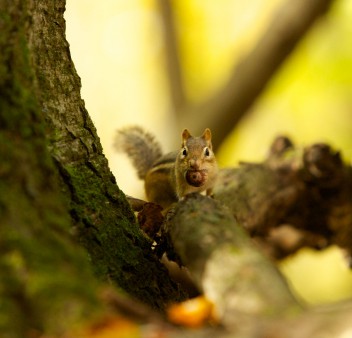Helping landowners to create wildlife habitat and wildlife food sources is one of the most rewarding things we do at Redstart. Based on our knowledge of the forest and the animals that live there, we can often target particular species with improved cover and food sources.
 One common method of improving habitat is creating patch openings: removing groups of trees so that young growth can be established for deer and moose browse, ruffed grouse or woodcock mating and feeding, and songbird nesting.
One common method of improving habitat is creating patch openings: removing groups of trees so that young growth can be established for deer and moose browse, ruffed grouse or woodcock mating and feeding, and songbird nesting.
Another common way to create better habitat is to increase the availability of mast, or wildlife food. We do this by releasing or planting trees such as black cherries, apples, oaks, and beeches. Releasing these trees from competition lets them grow more vigorously and produce more wildlife food. And if your forest does not contain such species, we can source seedlings and plant them where they will thrive.
Often, habitat enhancement can be integrated into other forest management activities. There are some great organizations, including Vermont Coverts and Vermont Audubon, which can provide more information about wildlife and their habitats. We also encourage that people learn more about important restoration efforts that Redstart participates in, such as the American Chestnut Foundation.

